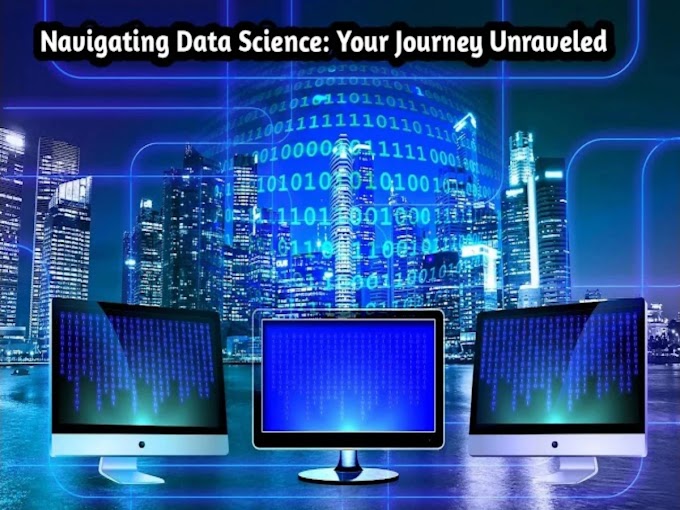The article is a comprehensive overview of data science, covering its essence, lifecycle, technical concepts, stakeholder roles, career prospects, applications, data types, approaches, pipeline phases, key concepts, tools, historical context, industry examples, future outlook and application of data science. It delves into various aspects of data science, from its interdisciplinary nature to the skills required for success in the field, as well as its impact on industries and society at large.
Definition:
Let us see how to define data science. Data science can be defined as an interdisciplinary field that utilizes scientific methods, statistical techniques, computational algorithms, and various mathematical and analytical disciplines to extract meaningful insights, knowledge, and actionable information from structured and unstructured data. It involves the extraction, analysis, and interpretation of large volumes of complex data, often referred to as big data, to make data-driven decisions, predictions, and recommendations across various domains such as business, science, technology, and more.
Essence of Data Science:
Data science is portrayed as a dynamic and multidisciplinary field that revolves around harnessing vast volumes of data through modern tools and techniques to uncover hidden patterns, derive meaningful insights, and drive informed decision-making. It leverages complex machine learning algorithms to construct predictive models, with data originating from diverse sources and existing in various formats.
Data Science Lifecycle:
The data science lifecycle is outlined in five stages: Capture, Maintain, Process, Analyze, and Communicate. Each stage involves distinct tasks, from acquiring raw data to effectively communicating insights to stakeholders.
Technical Concepts:
Technical concepts crucial for becoming a data scientist are highlighted, including machine learning, modeling, statistics, programming, and database management.
Stakeholder Roles in Data Science:
Various stakeholders are depicted as playing pivotal roles in overseeing the data science process, including business managers, IT managers, and data science managers.
• Data Scientists' Responsibilities: Data scientists are portrayed as the linchpins of data-driven decision-making, adept at analyzing business data to extract valuable insights and perform tasks such as discovering patterns, creating forecasting algorithms, improving data quality, and disseminating recommendations to stakeholders.
Career Prospects in Data Science:
The allure of a career in data science is emphasized, citing industry forecasts predicting a surge in demand for data scientists, promising a secure and rewarding career path.
• Diverse Applications: The article also explores the diverse applications of data science across domains such as healthcare, gaming, logistics, fraud detection, internet search, speech recognition, targeted advertising, airline route planning, and augmented reality.
Data Types and Preprocessing:
Data types in data science are categorized into traditional data and big data With traditional data referring to structured data stored in relational database management systems and big data referring to significantly larger and more complex datasets.
• Data Preprocessing Importance: The importance of data preprocessing for both traditional and big data is highlighted, emphasizing the critical role it plays in ensuring data accuracy, privacy, and analysis readiness.
Approaches in Data Science:
Explaining past behavior through business intelligence and predicting future behavior through predictive analytics. Business Intelligence: Business intelligence involves analyzing historical data to identify patterns and trends.
• Predictive Analytics: Predictive analytics leverages historical data to forecast future outcomes using traditional statistical methods.
Data Science in Industries:
Data science is depicted as having a wide range of applications across industries, including healthcare, finance, retail, and technology.
• Impact on Organizations: Fundamentally changing how organizations operate and make decisions.
• Distinguishing from Related Fields: The article also distinguishes data science from related fields such as data analytics, business analytics, data engineering, machine learning, and statistics, highlighting its unique blend of principles, tools, and techniques.
Data science vs data analytics:
• Data Science: Data science is a multidisciplinary field focusing on actionable insights from large raw and structured data sets. It uses computer science, predictive analytics, statistics, and machine learning to establish solutions to unknown problems. Data scientists predict trends, explore disconnected data sources, and enhance information analysis.
• Data Analytics: Data analytics processes and performs statistical analysis on existing datasets, focusing on uncovering actionable insights for current issues and presenting data effectively. It includes various branches of statistics and analysis, combining diverse data sources to find connections and simplify results.
• Difference between data science and data analytics: Data science has a macro scope, focusing on asking the right questions and establishing potential trends based on existing data. Data analytics, with a micro scope, aims to find actionable data for immediate improvements, focusing on answering specific queries based on existing data. Data science emphasizes exploration, while data analytics is more focused on focused analysis and immediate application.
• Interconnection: Data science and data analytics are interconnected fields. Data science lays foundations, parsing big datasets to establish observations, trends, and potential insights. Data analytics turns these insights into actionable solutions, bridging the gap between unknown questions and practical applications.
• Career Paths: Data science encompasses tasks like data collection, model training, and AI application development. It requires deep knowledge of machine learning, programming languages like Python and R, and experience with big data platforms like Hadoop. Data scientists also perform data analytics tasks, analyzing and evaluating datasets for potential use in algorithms or models.
• Data Analytics Tasks: Data analytics contextualizes datasets to facilitate informed decision-making. It includes predictive, prescriptive, diagnostic, and descriptive analytics to identify trends, predict outcomes, pinpoint reasons for events, and evaluate dataset qualities. Business decision-makers rely on data analytics for insights into sales, marketing, and product development.
• Data Analysts: Data analysts are dedicated professionals skilled in data wrangling and interpreting findings. They use statistical analysis software, database management systems, BI platforms, and data visualization tools to answer specific questions and provide actionable insights. Organizations employ data analysts for tasks like investigating campaign failures, analyzing employee turnover, and assisting forensic auditors.
Career opportunities in data science:
Various career opportunities in data science are explored.
• Roles and skills: Roles such as data analyst, data scientist, data engineer, and machine learning engineer, each requiring a combination of technical and soft skills.
Data science tools and Technologies:
The importance of tools and technologies such as Python, R, SQL, Tableau, Excel, Jupyter Notebook, Apache Spark, and Hadoop is emphasized, along with key concepts and phases in the data science pipeline.
Historical Context:
The historical context of data science is provided, tracing its origins back to the 17th century and highlighting key milestones in its evolution.
Industry Examples:
The article mentions top companies using data science for various purposes, including personalization, fraud detection, pricing optimization, and self-driving car technology. It also suggests beginner projects in data science to help develop skills, such as predicting housing prices, customer segmentation, spam detection, and building recommender systems.
Conclusion:
This article portrays data science as a rapidly growing and multifaceted field with diverse applications across industries, empowering organizations to extract valuable insights from data and drive informed decision-making. It emphasizes the interdisciplinary nature of data science, the importance of technical and soft skills, the role of stakeholders in the data science process, and the promising career prospects in the field. Additionally, it explores key concepts, tools, historical context, industry examples, and future outlook, providing a comprehensive overview of data science as a pivotal discipline in today's digital era.



.webp)





